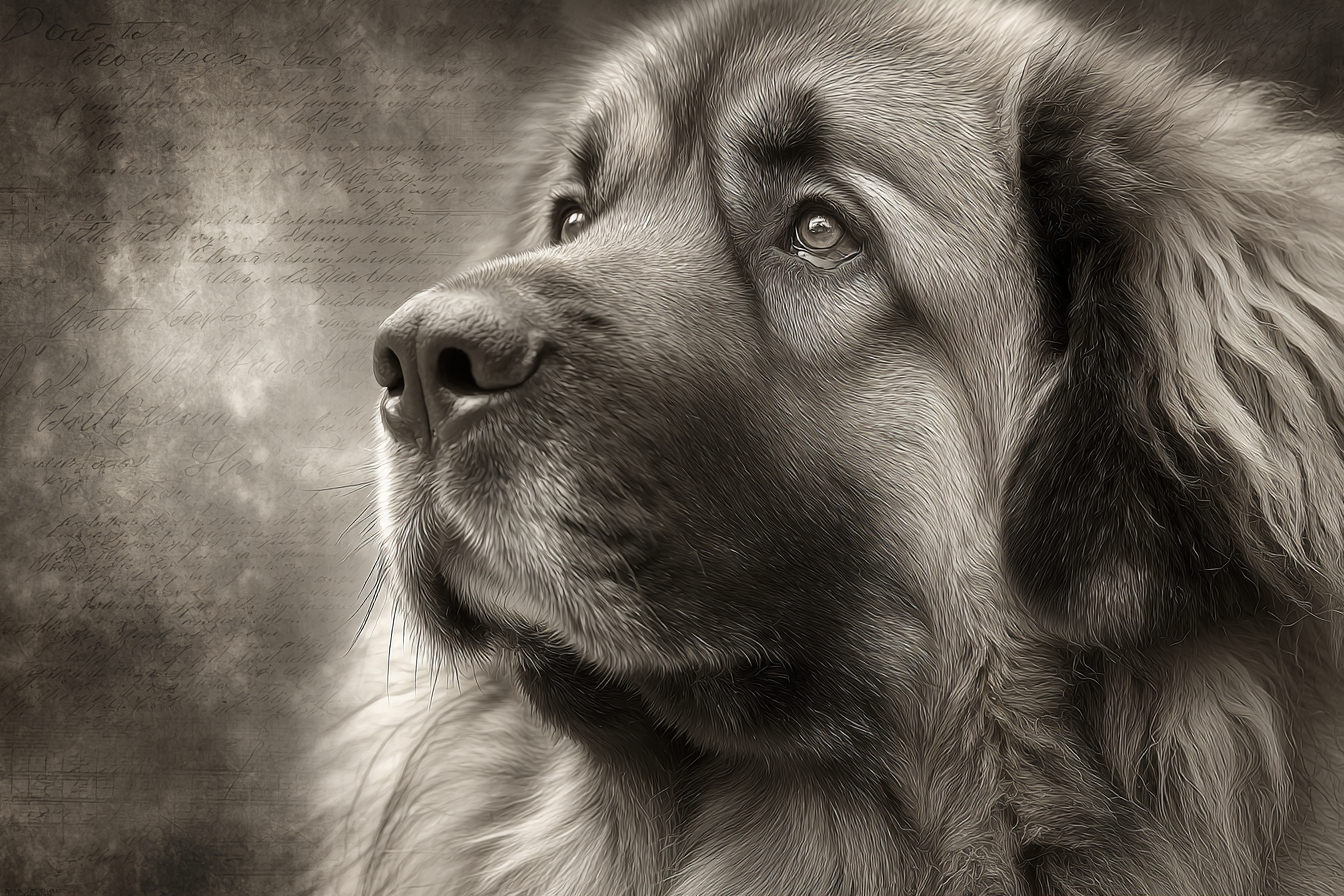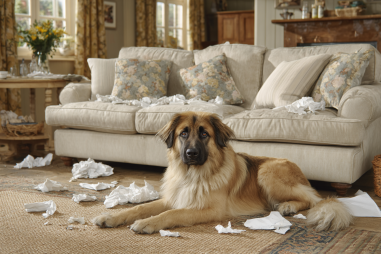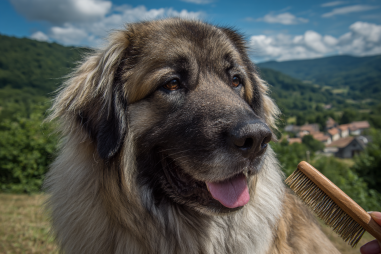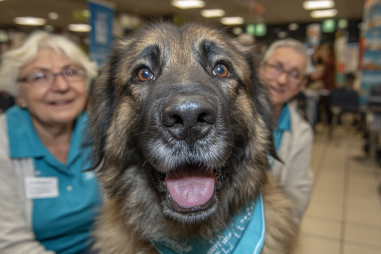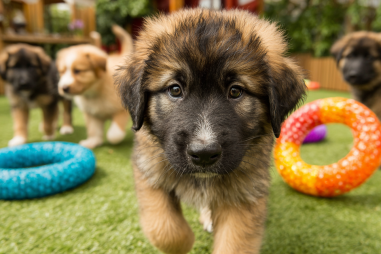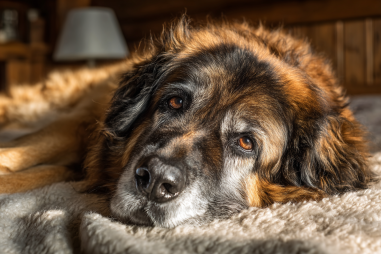The Leonberger breed is a magnificent giant with a gentle temperament and a fascinating past. Known for its majestic appearance and friendly nature, the Leonberger is more than just a beautiful companion — it’s a breed with a rich history rooted deeply in 19th century Germany. From its origins in the town of Leonberg to its journey toward recognition and widespread popularity, this breed’s story is as captivating as the dog itself. Let’s take a walk through history to uncover how the Leonberger came to be the beloved gentle giant we know today.
Origins of the Leonberger Breed
The origins of the Leonberger date back to the mid-1800s in the small German town of Leonberg. The breed was intentionally created by crossing several types of dogs with the goal of crafting a dog that embodied strength, loyalty, and grace. The idea was to develop a dog that resembled the lion on the town’s crest, symbolizing power and majesty.
To achieve this, several breeds were combined, including the Saint Bernard, Newfoundland, and Great Pyrenees. Each of these breeds contributed key qualities: the size and nobility of the Saint Bernard, the water-rescue capabilities and calm temperament of the Newfoundland, and the protective instincts and majestic appearance of the Great Pyrenees. The result was a large, muscular dog with a thick double coat, a lion-like mane around its neck, and a loving personality.
Role of Heinrich Essig and the Town of Leonberg
The story of the Leonberger cannot be told without mentioning Heinrich Essig, a German businessman and dog breeder who played a pivotal role in the breed’s creation and popularization. In the 1840s, Essig sought to develop a breed that could serve as a family companion while embodying the noble traits reflected in Leonberg’s coat of arms, which featured a lion.
Essig carefully selected and bred dogs with the qualities he wanted to achieve. It is believed he crossed a female Saint Bernard named “Löwenbiene” with a male Newfoundland named “Baron.” These lineages were supplemented by other breeds over time to solidify the Leonberger’s characteristics.
True to Essig’s vision, the breed quickly gained recognition around the town of Leonberg. The residents admired the dog for its imposing yet gentle demeanor, and the breed was named after the town as a tribute. The Leonberger became a symbol of local pride and allegiance, representing the courage and reliability of the region.
Breed Development and Recognition
Following its initial development, the Leonberger’s reputation continued to rise throughout Germany and beyond. The breed appealed to the aristocracy and upper classes, who valued both its impressive size and friendly disposition. Because of this increased interest, breeders began refining the Leonberger’s characteristics and establishing standards to maintain consistency among dogs of the breed.
In 1891, the German Kennel Club (Deutscher Hundeklub) officially recognized the Leonberger breed, affirming its status and encouraging responsible breeding practices. Over the next several decades, the breed gained enthusiasts across Europe and North America, slowly expanding its population and prominence.
Despite the challenges of two World Wars, the Leonberger breed managed to survive and even thrive due to dedicated breeders who worked tirelessly to protect the lineage. In the modern era, breed clubs around the world have continued to uphold strict standards to preserve the Leonberger’s unique qualities and noble nature.
Historical Uses and Working Roles
While today the Leonberger is primarily known as a family companion, historically, it served in various working roles that showcased its strength and intelligence. Its origins as a mixed breed of strong working dogs made it particularly suited for tasks requiring both power and patience.
- Draft and Rescue Work: With its massive size and stamina, the Leonberger was often used to pull carts and transport goods. Its Newfoundland ancestry particularly contributed to its ability to rescue people from water, with many Leonbergers employed in water rescue efforts in Europe.
- Guarding and Protecting: The Leonberger’s imposing presence and protective nature made it an excellent watchdog. It was typically entrusted with guarding farms and estates without displaying aggression unless necessary.
- Search and Rescue: Throughout history, Leonbergers were known for their keen sense of smell and tracking ability, sometimes participating in search and rescue missions, especially in mountainous regions.
These roles highlighted the breed’s versatility and work ethic, qualities which still shine through in today’s Leonbergers, even if their jobs have become more centered around companionship and therapy.
Evolution into a Modern Companion
As the 20th century progressed, the Leonberger transitioned more from a working dog to a beloved family pet and show dog. Thanks to its affectionate nature, intelligence, and ease of training, the breed quickly became a favorite among families looking for a loyal and gentle giant.
Today’s Leonberger is known for its calm disposition, tolerance with children, and friendly interactions with other pets and strangers. While the breed retains its impressive size and striking lion-like mane, modern Leonbergers are often bred with a focus on health, temperament, and adaptability to family life.
In addition to being a cherished household companion, Leonbergers frequently partake in dog sports, therapy work, and events that demonstrate their intelligence and versatility. They remain affectionate, patient, and protective — perfect traits for families desiring a devoted canine friend.
Preserving the Breed Today
With its long history and popularity, preserving the Leonberger breed’s health, temperament, and characteristics remains a key focus among breeders and enthusiasts worldwide. Several breed clubs and organizations are dedicated to promoting responsible breeding practices that prioritize genetic health and temperament over appearance alone.
Some of the challenges facing the breed today include:
- Genetic Health Concerns: As a large breed, Leonbergers can be prone to certain genetic health issues such as hip dysplasia, heart conditions, and certain types of cancer. Responsible breeders conduct health testing and carefully select breeding pairs to minimize these risks.
- Maintaining Temperament: Ensuring the breed remains as gentle and well-mannered as its history suggests requires ongoing socialization and temperament testing among breeding stock.
- Raising Awareness: Many people may be attracted to the breed’s large size and beauty without knowing the commitment involved. Educating potential owners on proper care and training is fundamental to preserving the Leonberger’s reputation as a family-friendly dog.
Thanks to the efforts of dedicated Leonberger enthusiasts, the breed continues to enjoy a bright future, connecting people with dogs that embody both majesty and heart.
A Legacy Worth Celebrating
From Heinrich Essig’s vision in the German town of Leonberg to the modern-day gentle giants who grace homes worldwide, the Leonberger breed history is a story of purpose, passion, and perseverance. Developed to evoke the spirit of a lion and the loyalty of a devoted companion, the Leonberger has evolved into a beloved breed that enchants dog lovers with its blend of strength and sweetness.
Whether admired for their breathtaking looks, trusted for their dependable nature, or cherished for their gentle interactions with children and families, Leonbergers carry a heritage that is as impressive as their stature. For anyone seeking to understand the origins of this remarkable breed, exploring its history opens the door to appreciating the deep-rooted qualities that make the Leonberger a true gentle giant.

